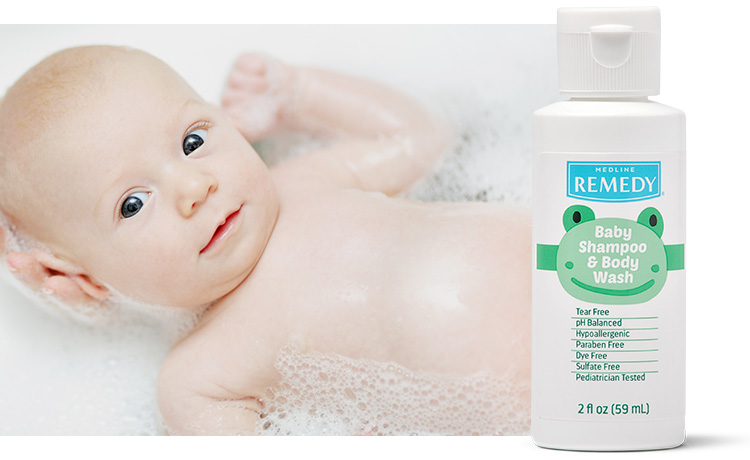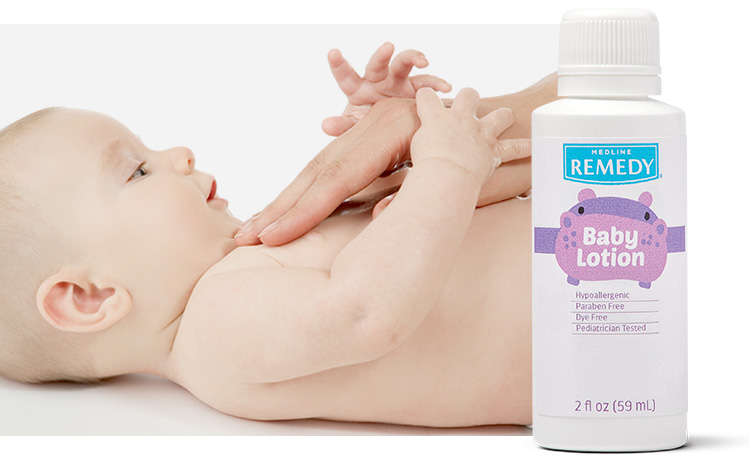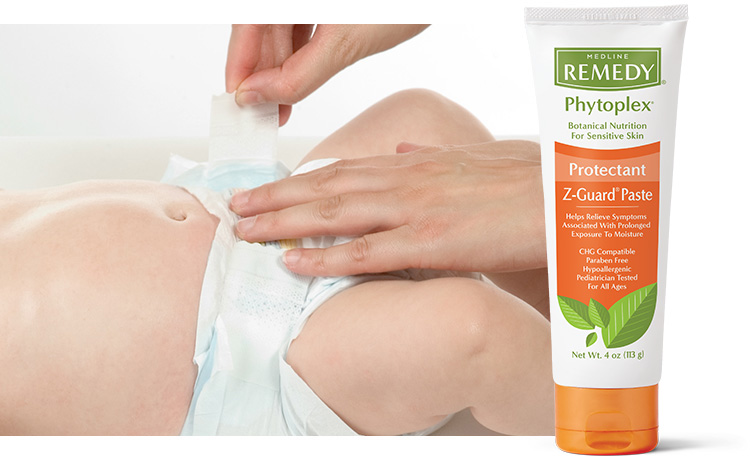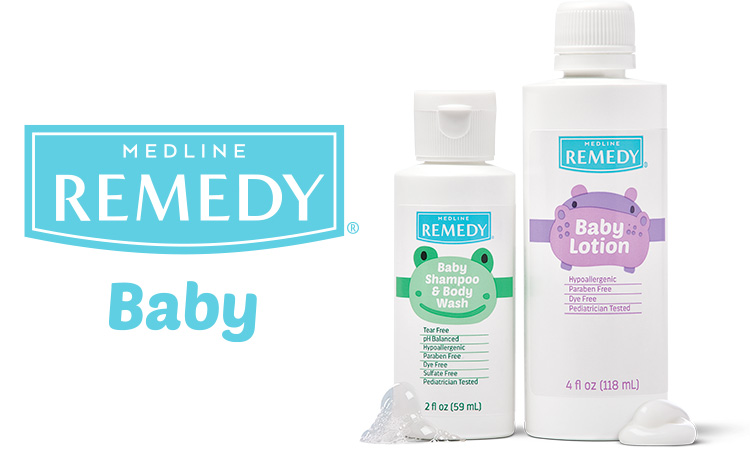Tips and tools for nurses and parents to help keep baby’s skin healthy

“Soft as a baby’s bottom” is a sweet sentiment, but infant skin isn’t just smooth. It’s also thinner and has less natural moisturizing factors than adult skin.1 Studies show that these characteristics are what make a baby’s skin more sensitive to irritation.2 As a wound care nurse, you know how important it is to use products that gently cleanse and moisturize infant skin. It’s also a great tip to share with parents.
It’s so irritating
Irritation for a baby’s skin typically means diaper rash, more technically referred to as diaper dermatitis. It’s not necessarily caused by the diaper itself, but the result of several factors in the diaper area, including moisture.2
When a newborn stays in a wet or dirty diaper for a long time, it can lead to an imbalance in skin pH levels, which, in turn, may reduce effective skin barrier function.2
Diaper rash by the numbers2
may suffer from diaper rash
of diaper rash
diaper rash
Change diapers frequently and follow the 3 steps below to help maintain infant skin barrier functions.
1. Make time for bath time
Regular bath time isn’t just lots of fun, as Ernie sings on “Sesame Street,” but it’s also a key care component for all babies. Skipping this routine may negatively affect the skin barrier.3 It’s been shown that cleansing with soapfree liquid cleansers made for delicate baby skin, such as Remedy Baby Shampoo & Body Wash, is preferable to washing with a cloth.2

In addition, using a specially formulated all-over shampoo and body wash like Remedy Baby offers pH balance without drying out skin and hair.
2. Moisturize every day
Upon drying baby after a bath, moisturize the skin with a pH-balanced product every day to help support skin barrier function.2 There are many options out there, so be sure to avoid ingredients such as sulfates, paraben and dyes. Instead, select fragrance-free lotions, such as Remedy Baby Lotion that helps moisturize and soften with ingredients like coconut oil that serves as an emollient and glycerin that may draw moisture into the baby’s skin.

A non-occlusive, silicone cream such as Remedy Phytoplex Hydraguard-D with nurturing botanicals can be used to relieve chapped or cracked skin.
3. Protect from irritation
Twice a week, apply a topical barrier cream to the baby’s skin.2 This step can help relieve baby’s discomfort from diaper rash and temporarily protect irritated skin associated with diaper rash. Look for ingredients such as micronized zinc oxide.

Key takeaway
Infant skin requires special care. Arm nurses and parents with a gentle skin care routine that helps support baby’s delicate skin.
A system of products to help support baby’s skin
Remedy Baby shampoo and body wash
Remedy Baby lotion
Remedy Phytoplex Hydraguard
Remedy Phytoplex Z-Guard Paste

Link to more information about
Clinical skincare with nurturing botanicals
Skin Health Solutions for you and your team
Skin Champion Program that helps empower your staff to make skin health second nature
References:
(All accessed May 21, 2020)
Ref 1 https://www.ncbi.nlm.nih.gov/pmc/articles/PMC5606948/
Ref 2 https://onlinelibrary.wiley.com/doi/full/10.1111/pde.13495
Ref 3 https://onlinelibrary.wiley.com/doi/10.1111/pde.12819
